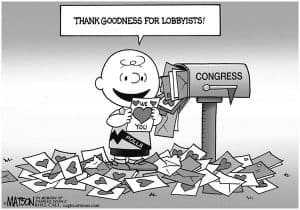The United States is used to equating being “the greatest power in the world” and a democracy. But which is it? How and why a constitutionally limited government would turn into a superpower?
| This post is part of a reading series on Democracy Incorporated by Sheldon S. Wolin. To quickly access all chapters, please click here. Disclaimer: This chapter summary is personal work and an invitation to read the book itself for a detailed view of all the author’s ideas. |
When George W. Bush said as a matter of pride that the United States is the “greatest power in the world” he was not necessarily doing the country a favor. Conflating power and greatness has never bode well for democracy, and the president himself proved it by opening an era of expanded executive powers concerning the right to war and against citizens’ privacy as well as public liberties. Defining a country by its power is, in any case, a particularly narrow path toward its greatness. This is in fact, as Sheldon Wolin points out, contradictory: “Does, or can, our Constitution, which typically has been understood as intending to limit power, actually authorize power of the magnitude being claimed by the president or is an extraconstitutional justification being claimed?” In other words, “How, and when, did the people delegate ‘the greatest power in the world’ to their government? If the people did not have that power in the first place, where does it come from?” There lies the perversion of democracy addressed in this chapter.
Contrary to classic forms of totalitarianism, the perversion of democracy does not announce itself in ways that could be immediately flagged as authoritarian. There is no dictator building power around his supposed charismatic persona, animated by the intent to become the center of gravity of all public institutions.1 As a matter of fact, inverted totalitarianism follows an entirely different course: “the leader is not the architect of the system but its product. George W. Bush no more created inverted totalitarianism than he piloted a plane onto the USS Abraham Lincoln. He is the pliant favored child of privilege, of corporate connections, a construct of public relations wizards and of party propagandists.” It follows that “Unlike the classic totalitarian regimes which lost no opportunity for dramatizing and insisting upon a radical transformation that virtually eradicated all traces of the previous system, inverted totalitarianism has emerged imperceptibly, unpremeditatedly, and in seeming unbroken continuity with the nation’s political traditions.”
Inverted totalitarianism, therefore, does not succeed by being a blatant rupture with democracy but by being, precisely, its inversion. “An inversion is present, says the author, when a system, such as a democracy, produces a number of significant actions ordinarily associated with its antithesis: for example, when the elected chief executive may imprison an accused without due process and sanction the use of torture while instructing the nation about the sanctity of the rule of law.” Obviously, Guantanamo or the fate of whistleblowers such as Chelsea Manning and Edward Snowden—soon to be followed by Julian Assange—came to mind when Sheldon Wolin was writing these words. The important point, here, is that while classic forms of totalitarianism celebrate their breaking with the constitutional system of the past, inverted totalitarianism subverts it.
As such, totalitarianism is “the attempt to realize an ideological, idealized conception of a society as a systematically ordered whole, where the ‘parts’ (family, churches, education, intellectual and cultural life, economy, recreation, politics, state bureaucracy) are premeditatedly, even forcibly if necessary, coordinated to support and further the purposes of the regime. The formulation of those purposes is monopolized by the leadership.” In classical totalitarian regimes, it is assumed that total power is exclusively achievable from the top. Inverted totalitarianism, on the contrary, is free from the grandiosity expressed by the Duce, the Fuhrer, the Great Helmsman, or whichever supreme figure is supposed to embody all by himself the good of the country. It simply reflects “the belief that the world can be changed to accord with a limited range of objectives, such as ensuring that its own energy needs will be met, that ‘free markets’ will be established, that military supremacy will be maintained, and that ‘friendly regimes’ will be in place in those parts of the world considered vital to its own security and economic needs.” Formally limiting the objectives of government to seemingly reasonable ones may nevertheless hide that only corporations are meant to benefit from them.2
The transition from a government presided by the idea that all men are born free and equal in rights to a democracy managed by and for corporate entities has become a reality without the need for brown shirts parading in the streets. Sheldon Wolin adds in that regard that “Inverted totalitarianism also trumpets the cause of democracy worldwide. As we shall point out in later chapters, ‘democracy’ is understood as ‘managed democracy,’ a political form in which governments are legitimated by elections that they have learned to control. . . . Managed democracy is centered on containing electoral politics; it is cool, even hostile toward social democracy beyond promoting literacy, job training, and other essentials for a society struggling to survive in the global economy. Managed democracy is democracy systematized.” This last phrase refers to the systematization of the appearances of democracy to better serve the exclusive interests of the corporate power elite.



